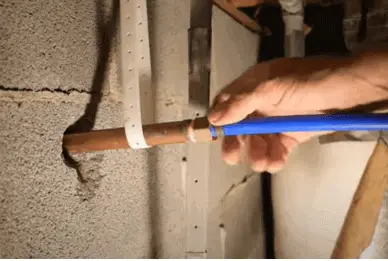Sillcock vs Spigot
Table of Contents
Sillcock and Spigot are two common terms often used for outdoor faucet fittings. The purpose of using both items is almost the same for washing or gardening. However, they have some key differences that make them different.
Silcocks are easy to operate, provide better control, and are durable, modern, and larger. But they are much more expensive than the Spigot and can only be used for DIY projects for outdoor activities. Spigots are affordable and versatile, but they need to be more durable. Spigots connect the hose for outdoor water or liquid transfer, not directly for water transfer.
However, this, Sillcock vs Spigot guide will make it easier for you to choose the better one. Let’s read and decide which one is better for your outdoor faucet.
What is Sillcock
Sillcock is a modern term in plumbing used for a valve usually installed on the exterior of the building for an external water source. It is also named a hose bib; the term Silcock is used for it because it is installed on the sill of a window.
It ensures a convenient water supply for outdoor activities such as vehicle washing, filling the pool, and watering your garden.
Benefits of Sillcock
- Easy Installation
- Durable
- Convenient water access
- Cost-effective
- Versatile
- Easy maintenance
What is Spigot?
Spigot is a small tap or valve used in plumbing to control the flow of liquid or gas. You can regulate the water or liquid flow by opening and closing the valve.
It is commonly used in irrigation systems, plumbing systems, and in other transfers of gases or liquids. They come in metal or plastic material. Their water regulation is controlled by a handle or lever that may work manually.
Benefits of Spigot:
- Easy to use
- Easy to install
- Better control over the liquid transfer
- Durable
- Easy Maintenance

Quick Comparison Chart- Sillcock VS Spigot
| Features | Sillcock | Spigot |
| Purpose | Used for outdoor water supply | Used for connecting hose to outdoor liquid or water supply |
| Location | Sill of the Window or near building foundation | Near the building foundation |
| Valve Type | Stem and ball | Screw on Valve |
| Material | Chrome or Brass | Cast iron or aluminum |
| Size | Larger | Smaller |
| Cost | Expensive | Less Expensive |
Sillcock VS Spigot- Key Differences
- Purpose
Sillcock is designed to be used for outdoor water supply. It is usually installed on outdoor faucets for watering plants in the garden, washing cars, or other outdoor activities.
While the Spigot is basically designed to connect a hose to a water supply. It is used for DIY projects and mostly in industrial projects to make it convenient to transfer liquids through a hose.
- Location
The location for a sillcock is outside of the building on to the Sill or the window. But it can also be mounted near the foundation. While spigot is installed near the foundation of the building to ensure smooth water or liquid transfer for outside activities.
- Valve Type
Sillcock has a stem and ball valve design that can be opened and closed by turning. You can easily turn the valve to adjust the water flow. On the other hand, the spigot is a little complex.
It has a screw on the valve that needs to twist to open or close the spigot. Sometimes it becomes tough or needs tools if outside it is wet or corrosion.
- Material
Sillcocks are modern outdoor faucet solutions made of chrome or brass material. You can find sleek and attractive designs of sillcocks. But the spigots still come in traditional designs and materials. You will find spigots in aluminum or cast iron more prone to corrosion.
- Size
In size comparison, Sillcocks are larger and more visible to Spigots. Spigots come in a discreet and smaller size. You can easily find the Sillcocks, and due to their large size, it gives better control of operation than Spigots.
- Cost
As discussed before, Sillcocks come with advanced features, modern materials, and larger sizes. So they are more expensive than the spigot.
(FAQs) : Spigot vs Sillcock
Which is better for outdoor faucets, sillcocks, or spigots?
Sillcocks and spigots are both used as outdoor faucets. But sillcocks are better for outdoor faucets because they have built-in valves to allow better control.
You can turn the valve to turn off the water. It prevents freezing and leaks. Spigots are a simpler option but lack the added protection of a valve.
Can a spigot be used in place of a sillcock?
Yes, you can use Spigot in place of a sillcock. But it is only when you have urgent use, otherwise, do not use it. Sillcocks are designed for outdoor activities and have advanced features to provide better control than Spigots.
Can a sillcock be used for hot water?
Yes, a sillcock can be used for hot water, but it is not recommended as it was not designed for high-temperature water. The materials used in a sillcock are not heat resistant and can cause leaks or damage over time. It is better to use a dedicated hot water faucet or valve.
Can you turn off the water supply at a sillcock or spigot?
Yes, the water supply to a sillcock or spigot can be turned off. But first, locate the main shutoff valve for the house or the valve closest to the sillcock or spigot and turn it off. It is essential to know where the main shutoff valve is in an emergency.
Video Review: Sillcock vs Spigot Hose
My Opinion [ Sillcock VS Spigot]
Sillcock and Spigot come with versatile features. Both are good to use for outdoor activities, but their choice depends on your preferences and needs.
Sillcocks are a better choice for outdoor DIY activities such as gardening or washing cars. They are easy to open and close, give better control, are made of durable materials, and come in sleek designs. But the drawback is that Sillcocks are expensive.
While the Spigots are an excellent choice if you have a low budget. They are complex to operate but offer you greater versatility. You can use them as a replacement for Sillcoks in an emergency. But it is widely used in irrigation systems and industrial projects. It supports control over the transfer of gas, water, or other liquids.

